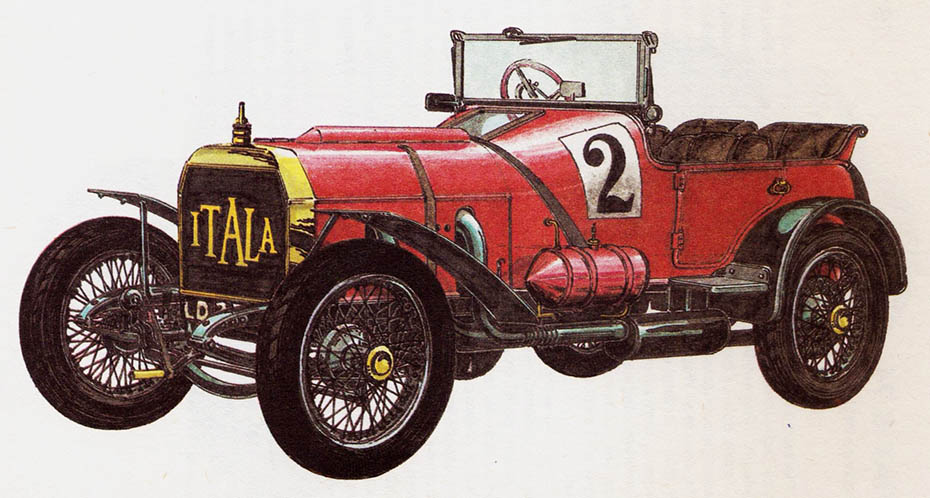ITALIAN – year 1908
Fabbrica Cars Itala S.A., Turin, Italy.
Itala's trademark is not unknown to car enthusiasts. Already in 1905 year, a year after the company was founded, Matthew Ceirano – Constructor and founder of the company in one person - he built his first racing model. It was big, four-cylinder car with engine capacity 16 666 cm3, which, driven by Raggio, won the competition for the Coppa Florio Cup, later transformed into Targa Florio races. Itala's team consisting of Cagno, Fabry and Baron de Caters took part in the Grand Prix at Le Mans in 1906 year, driving sixteen-liter models. Cars with interchangeable wheel rims had problems with the wooden spokes, which cracked and with engine cooling, which gradually lost their importance at races.

Fabbrica Cars Itala S.A., Turin, Italy.
For the competition in 1908 of the year, the company prepared a new racing car with a four-cylinder engine with a capacity of 12 045 cm3 (Ø 154,8 x 160 mm) and power 73,6 kW (100 KM) by 1600 RPM. The water-cooled engine was equipped with OHV valve timing and was distinguished by exceptional overload resistance. Wooden spoke wheels protected Pirelli tires. The frame chassis had at the front and rear rigid axles suspended on longitudinal semi-elliptical springs. The driving force was transmitted to the rear wheels via a universal drive shaft. The car was reaching maximum speed 160 km/h. W 1908 r. Alessandro Cagno and Henry Fournier on these cars took the ACF Grand Prix respectively 11 i 20 place.
Itala actively participated in various sports events and immediately introduced all technical innovations into production, that could improve the quality of her cars. W 1907 of the year, itala's car won the Beijing-Paris long marathon 16 000 km. The driver was an Italian aristocrat, Prince Scipio Borghese.
W 1913 In the year, Itala used a slide-timing engine in its racing model, however it turned out, that such engines require a lubrication problem to be solved and are not suitable for extreme racing conditions. For this reason, after World War I, the designers returned to the traditional valve train. Itala cars appeared on the racetracks for the last time in 1930 year.